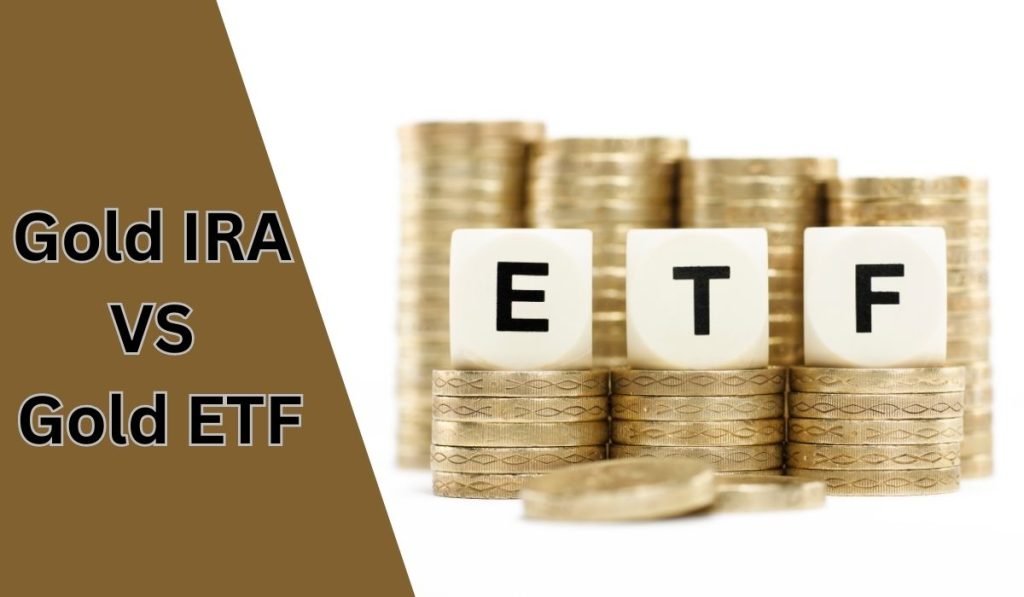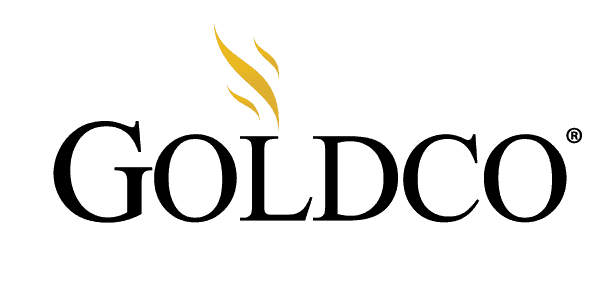
When it comes to investing in gold, there are several options available, and among the most popular are Gold Individual Retirement Accounts (IRAs) and Gold Exchange-Traded Funds (ETFs). Both are designed to provide investors with exposure to precious metals while offering unique advantages and disadvantages. Deciding which investment option is better suited to your needs may seem challenging, but understanding the core differences is essential for making an informed choice.
Gold IRAs function as a retirement savings account specifically tailored for holding physical gold bullion and coins, which enables long-term investors to benefit from tax-advantaged growth. This gold ira alternative investment option can diversify your portfolio and offer protection against economic downturns and currency devaluation. However, choosing the right custodian is crucial for simplifying the process and ensuring compliance with all applicable rules and regulations.
On the other hand, Gold ETFs offer a more convenient way to gain exposure to the gold market without needing to handle or store physical gold. These funds are traded on major stock exchanges and are easily accessible to investors with a brokerage account. As a result, they typically come with lower costs and can be an appealing choice for those looking for short or medium-term investments.
Gold IRA and Gold ETF: Definitions
What is a Gold IRA?
A Gold IRA (Individual Retirement Account) is an investment vehicle that I use to save for retirement by purchasing and holding gold bullion or coins, or other approved precious metals. This option allows me to diversify my retirement savings, as it provides an alternative to traditional stocks and bonds. It offers an added layer of protection against inflation and financial crises, thanks to gold’s historical stability and value preservation.
What is a Gold ETF?
A Gold ETF (Exchange-Traded Fund) is a type of investment that tracks the price of gold. One unit of a gold ETF is typically equivalent to 1 gram of 99.5% pure gold. It combines the characteristics of mutual funds and stocks, where it’s passively managed like a mutual fund, yet it can be traded on stock exchanges like stocks. Gold ETFs offer an easy and accessible way for me to invest in gold without the need to physically store the precious metal. They provide exposure to gold prices without the hassle of managing its physical possession.
Investment Objectives
Long-Term Security
As an investor, when considering Gold IRA and Gold ETF, my primary objective is long-term security. A Gold IRA is an Individual Retirement Account that allows me to hold physical gold in a tax-advantaged manner, providing more stability in my retirement savings. It is designed for long-term investment, usually aiming at providing financial security during retirement.
On the other hand, Gold ETFs are exchange-traded funds backed by gold and are traded on stock exchanges. This means that I’m not holding physical gold, but rather shares of a fund that owns gold. While Gold ETFs can offer exposure to gold price movement, they do not guarantee the same physical protection as Gold IRAs do. However, with Gold ETFs, I can avoid storage and insurance costs, as well as enjoy better liquidity.
Liquidity
When it comes to liquidity, Gold ETFs have a clear edge for me. As they are traded on stock exchanges, I can buy and sell them easily, just like any other stock. This allows me to have immediate access to my investment and take advantage of price fluctuations.
In contrast, Gold IRAs require more steps for liquidation. Since the physical gold is held in a qualified depository, accessing my investment would involve contacting the custodian, selling the gold, and receiving the cash proceeds — a process that can take some time. This might make Gold IRAs less suitable for those who wish to trade actively or require immediate access to their investments.
Diversification
As an investor, I strive for a diversified investment portfolio. Both Gold IRAs and Gold ETFs can contribute to diversification.
A Gold IRA allows me to hold various forms of physical gold, such as coins and bullion, adding a tangible asset to my portfolio. Having a portion of my retirement savings in gold can provide a hedge against inflation, economic downturns, and currency fluctuations.
On the other hand, Gold ETFs offer exposure to gold price movement without the need to hold physical gold. By investing in Gold ETFs, I can benefit from gold’s performance without the hassles associated with buying, storing, and insuring physical gold. Additionally, some Gold ETFs track indexes of gold mining companies, which can further diversify my investment.
In summary, both Gold IRAs and Gold ETFs have their merits and can serve different investment objectives.
Fees and Expenses
When comparing Gold IRA and Gold ETF investments, it’s essential to understand the fees and expenses associated with each. In this section, I’ll detail these costs and provide you with a clear understanding of the expenses involved in both investment options.
Gold IRA Fees
A Gold IRA consists of holding physical gold assets, usually in the form of coins or bullion, in an individual retirement account (IRA). Some fees and expenses related to Gold IRAs include:
- Setup fees: These are one-time fees charged when opening a Gold IRA account. Typically, these fees range from $50 to $100.
- Storage fees: As physical gold needs to be stored securely, storage fees are a yearly expense for Gold IRA holders. The cost usually ranges from 0.5% to 1% of the total gold value held in the IRA per year.
- Custodian fees: Gold IRA custodians charge annual fees for managing and administering the IRA, which typically range from $75 to $300 per year.
- Dealer commissions: When purchasing physical gold for an IRA, dealers often charge a small commission, typically ranging from 1% to 3% of the purchase price.
Gold ETF Fees
Gold ETFs (Exchange-Traded Funds) are financial instruments that hold gold as an underlying asset and can be bought and sold on stock exchanges. They are more like traditional securities rather than physical gold ownership. Gold ETF fees include:
- Expense ratio: This annual fee covers the management and administrative costs of the ETF. Expense ratios for gold ETFs usually range from 0.25% to 0.6% per year.
- Brokerage commissions: When buying or selling shares of a gold ETF, brokerage firms might charge a commission based on each transaction. Some brokers offer commission-free ETFs, while others can charge anywhere from a few dollars to $20 per transaction.
I hope this breakdown of fees and expenses associated with Gold IRAs and Gold ETFs helps you better understand the costs involved in each investment option. Considering these expenses is an essential factor in deciding which investment type suits your needs best.
Taxes and Retirement
Gold IRA Tax Implications
In a Gold IRA, I can benefit from tax-advantaged growth, which means I don’t need to pay taxes on my gains from gold investments until I start making withdrawals during retirement. This tax-deferred status allows my Gold IRA to grow in a tax-efficient manner, offering more long-term potential for wealth accumulation. However, it’s essential to choose a custodian that simplifies this process and ensures compliance with IRS rules and regulations.
It’s also important to note that when withdrawing from a Gold IRA, the funds are typically treated as ordinary income. This means the withdrawals will be subject to federal income tax at my individual rate during that time.
Gold ETF Tax Implications
When I invest in gold ETFs, I may be subject to different tax treatments compared to a Gold IRA. Gains on bullion held longer than one year in a Gold ETF are taxed at a maximum 28% tax rate, while gains on bullion held for one year or less are taxed as ordinary income. It’s crucial to keep this in mind when planning the investment strategy for my retirement portfolio.
Additionally, Gold ETFs may distribute capital gains, dividends, and interest that can affect my annual tax liability. Understanding the potential implications of these distributions can help me make better decisions about my investments and prepare for possible tax consequences.
Risk Management
As an investor comparing Gold IRA and Gold ETF, it’s crucial to understand the various risks associated with each investment option. In this section, I’ll address three key risk factors: Counterparty Risk, Sovereign Risk, and Market Risk.
Counterparty Risk
When investing in a Gold ETF, I expose myself to counterparty risk. This is because my investment doesn’t represent direct ownership of physical gold. Instead, it is a financial product backed by institutions or other parties, such as banks and custodians, that manage and store the gold. If these parties face bankruptcy or other financial difficulties, my investment could be adversely affected.
On the other hand, with a Gold IRA, I own physical gold stored in a secure depository. This means that my investment is not reliant on the financial solvency of third parties. Therefore, the counterparty risk is minimal in a Gold IRA investment.
Sovereign Risk
Sovereign risk refers to the risk of a government interfering in the investment or imposing unfavorable regulations. As gold is a global commodity, it can be affected by political developments and regulatory changes in various countries.
Investing in a Gold ETF exposes me to more sovereign risk compared to a Gold IRA. Gold ETFs tend to invest in gold across different countries, and any geopolitical instability or unfavorable regulations in those countries can impact the ETF’s performance.
With a Gold IRA, my physical gold investment is stored in an approved depository within my country, lessening exposure to foreign sovereign risks. While there may still be sovereign risk from my country’s government, it is generally considered lower than the risks associated with international markets.
Market Risk
Market risk refers to the potential loss in the value of my investment due to fluctuations in market prices. Both Gold IRA and Gold ETF investments are exposed to market risk, as the price of gold can fluctuate based on numerous factors such as economic conditions, inflation, and investor sentiment.
It’s worth noting that gold, as a tangible asset, has historically served as a hedge against inflation and currency devaluation. As a result, both Gold IRA and Gold ETF investments provide some protection against certain market risks.
To sum up, considering risk management while investing in gold is crucial. With Gold IRA, I can mitigate counterparty and sovereign risks more effectively, but market risk is inherent to both investment options.
Accessibility to Physical Gold
Physical Gold in a Gold IRA
In a Gold IRA, I personally own physical gold, which provides me with a sense of security. This type of investment ensures that I have access to tangible assets during uncertain economic times. The physical gold is held in my IRA by a custodian, who stores and manages the metal on my behalf.
When it comes to liquidity, I can sell my physical gold within the IRA to generate funds or take a distribution in the form of physical gold. However, it’s important to keep in mind that there may be fees and restrictions associated with withdrawing physical gold from a Gold IRA. Additionally, I must consider storage and insurance costs associated with this type of investment.
Physical Gold in a Gold ETF
With a Gold ETF, I don’t directly own physical gold, but rather shares of a fund that invests in gold. This fund typically holds physical gold bullion or gold-related investments, such as mining stocks. The value of the ETF is tied to the price of gold, so as an investor, I can still benefit from fluctuations in the gold market.
Although a Gold ETF provides exposure to gold without the need to worry about storage and insurance costs, there is no access to the physical gold itself. If I want to convert my ETF shares into physical gold, I would first need to sell my shares and then use the proceeds to purchase physical gold. This process may be less straightforward compared to the distribution of physical gold within a Gold IRA. However, Gold ETFs offer higher liquidity and can be easily bought and sold on stock exchanges, similar to traditional stocks.
In summary, when it comes to accessibility to physical gold, both Gold IRAs and Gold ETFs have their unique advantages and drawbacks. While Gold IRAs allow for direct ownership and potential distribution of physical gold, they come with additional storage and insurance costs. On the other hand, Gold ETFs provide easy exposure to the gold market without the need for physical storage but lack direct access to the physical gold itself. As an investor, I must carefully consider my personal investment objectives and preferences when choosing between these two options.
Making a Decision: Gold IRA VS Gold ETF
When deciding between investing in a Gold IRA or a Gold ETF, I consider my individual investment goals, risk tolerance, and overall portfolio strategy. Both investment options come with various benefits and drawbacks, so it’s essential for me to carefully weigh them before deciding which one is better suited to my needs.
Gold IRAs provide a safe and secure means of investing in physical gold, allowing me to maintain control over the actual physical asset. This is particularly appealing to me if I’m looking for a long-term investment to protect my wealth from inflation and economic uncertainty. Moreover, Gold IRAs offer tax advantages, such as the potential for tax-free growth until withdrawal during retirement. However, it’s worth noting that these investments do come with higher initial costs and ongoing storage fees compared to Gold ETFs.
On the other hand, Gold ETFs offer a more convenient and cost-effective way for me to gain exposure to gold without the need to buy, store, and secure physical bullion. Gold ETFs can be easily bought and sold like stocks, providing me with greater liquidity and the ability to capitalize on short-term price movements. Additionally, these funds tend to have lower management fees and expense ratios, which can be more appealing if I’m looking for a short to medium-term investment. However, investing in Gold ETFs means that I won’t have direct ownership of the physical gold, a factor worth considering if having the actual gold in my possession is important to me.
As a confident and knowledgeable investor, I also must be aware of the market trends, the performance of gold, and economic indicators to make an informed decision. In general, a diversified approach to investing is considered a wise strategy, which means that I could potentially allocate some of my investment portfolio to both Gold IRAs and Gold ETFs depending on my unique financial situation and investment objectives.
Frequently Asked Questions
What are the main differences between a gold IRA and a gold ETF?
A gold IRA (Individual Retirement Account) allows me to invest in physical gold and other precious metals as part of my retirement savings. It usually involves higher fees and requires a custodian to store and manage the physical metals. On the other hand, a gold ETF (Exchange-Traded Fund) lets me invest in gold without physically owning it, primarily through purchasing shares in funds that hold gold stocks, futures, or options. Gold ETFs tend to have lower fees than gold IRAs and are traded like stocks on an exchange.
How do the costs compare between a gold IRA and a gold ETF?
Gold IRAs often come with higher fees than gold ETFs, as they require a custodian to manage the storage and administration of the precious metals. Gold IRA fees usually include setup charges, storage fees, and transaction expenses. In contrast, gold ETFs generally have lower fees, including expense ratios and brokerage costs. However, it’s essential to compare specific offerings, as fees can vary between providers and products.
What are the tax implications of investing in a gold IRA versus a gold ETF?
Gold IRAs provide me with tax advantages due to their nature as a retirement account. Contributions made to a traditional gold IRA are often tax-deductible, and any earnings grow tax-deferred until I withdraw them during retirement. For a Roth gold IRA, contributions are made after tax, and qualified withdrawals are tax-free. In comparison, gold ETFs are subject to standard capital gains tax when I sell shares, depending on the holding period and my individual tax rate.
How accessible and liquid are investments in gold IRAs and gold ETFs?
Gold ETFs are typically more accessible and liquid compared to gold IRAs. I can easily trade ETFs on stock exchanges during market hours, providing flexibility and immediate access to my investment. Gold IRAs, on the other hand, have limitations on accessing funds, such as penalties for early withdrawals before retirement age and mandatory required minimum distributions after age 72. Additionally, selling physical metals through a gold IRA usually takes longer compared to trading gold ETFs.
Which investment is generally considered safer: a gold IRA or a gold ETF?
Both gold IRAs and gold ETFs offer different levels of safety. Gold IRAs allow me to own physical gold, which is generally considered a safe haven asset during economic downturns and market volatility. The storage and management by a custodian also provide security for my investment. Gold ETFs, while backed by gold, do not have the same tangible ownership and may be exposed to counterparty risk. However, the diversification offered by some gold ETFs can help reduce risk by spreading investment across various gold-related instruments.
What are the key factors to consider before choosing between a gold IRA and a gold ETF?
When deciding between a gold IRA and a gold ETF, I should consider factors such as my investment goals, time horizon, risk tolerance, fees, tax implications, and accessibility to funds. If I am looking for long-term retirement savings with tax advantages, a gold IRA may be suitable. In contrast, if I seek easy trading and liquidity while diversifying my portfolio with exposure to gold, a gold ETF may be a better fit. Ultimately, the right choice for me should align with my individual financial objectives and circumstances.




